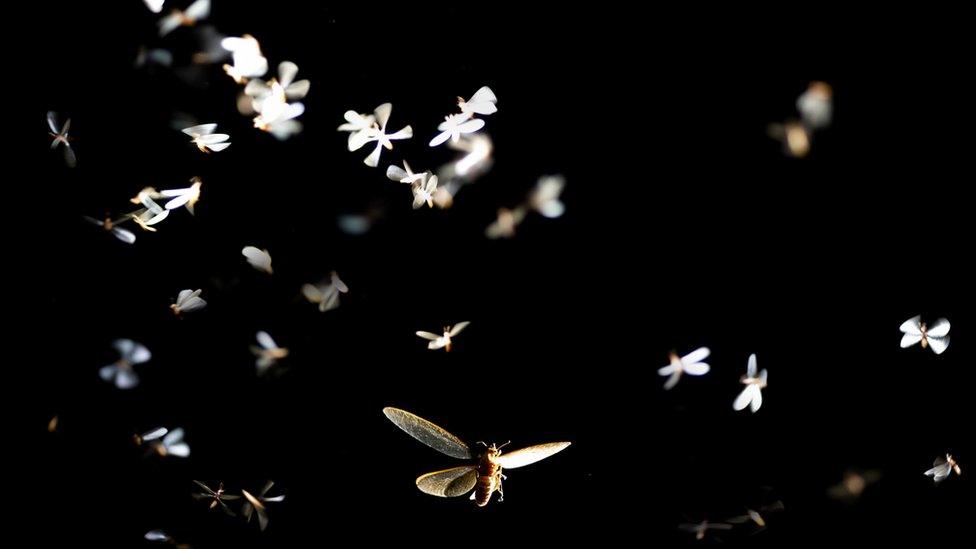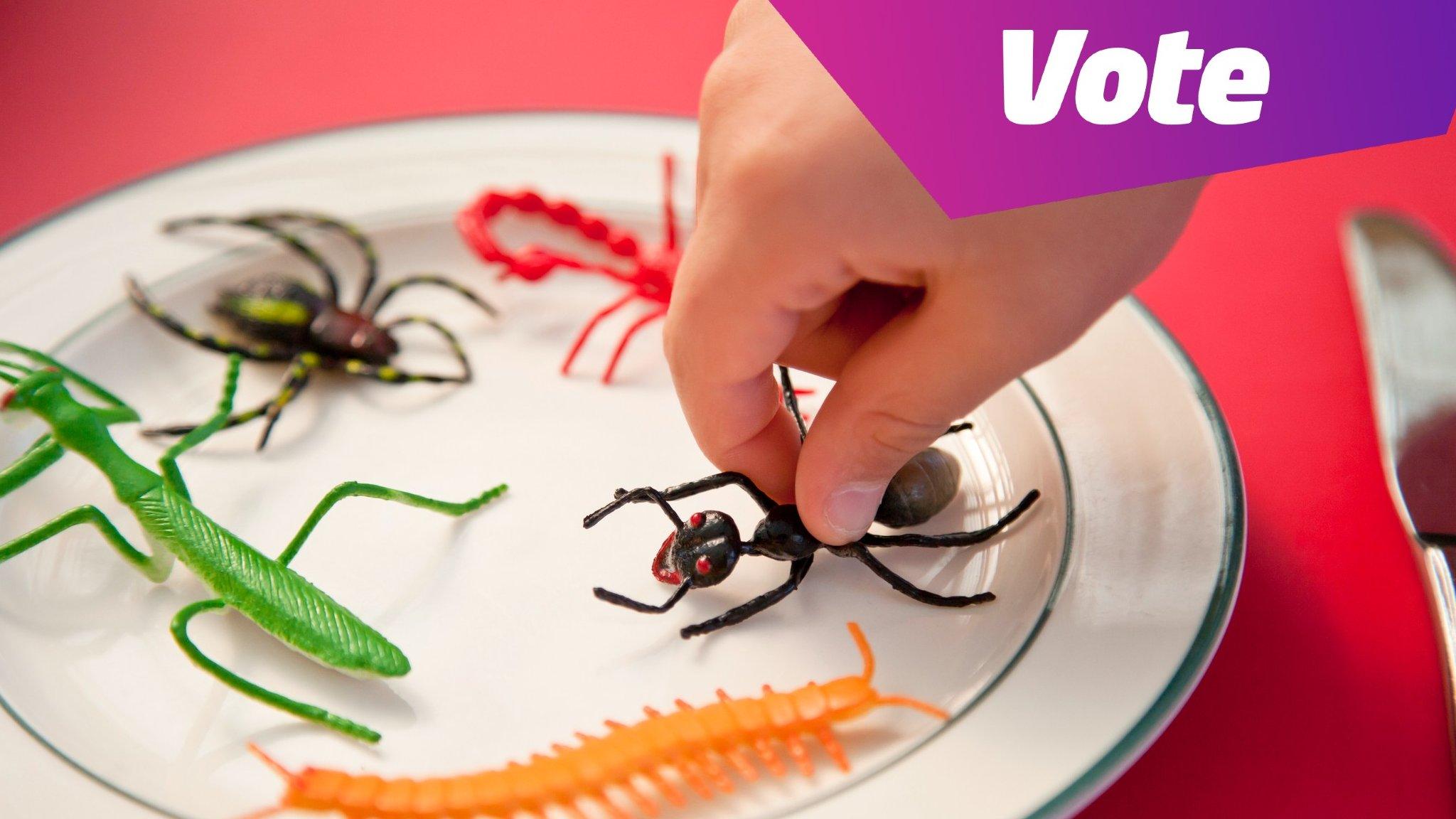Why are bugs attracted to light?
- Published
- comments

Does the phrase 'like moths to a flame' really hold true?
On a warm summer day, if you have a light on outside, you'll probably see lots of bugs being drawn towards it.
But scientists at Imperial College London have discovered that insects don't do this because they're attracted to the glow - they say the light interferes with the part of the insect's brain that helps them fly.
Until now, it was thought that insects use moonlight to help them see where they're going, and they're drawn to artificial lights because they think it's the Moon.
But this doesn't explain why insects who only fly in the day also act this way.
The paper written by the researchers at Imperial College says: "Our results suggest artificial lights may only trap passing insects rather than attract them directly from farther away".
How did researchers find out insect brains are confused by lights?

The scientists found that artificial lights mess up the systems bugs use to fly
The researchers filmed lots of insects at night using a high-speed camera to track their movements around lights.
They noticed three things in the footage:
When insects fly above lights, they often turn upside down, causing them to fall out of the air
When they pass under lights, the start doing loop-the-loops, and if the angle gets too steep, they also fall
When they approach lights from the side, they start to circle around it
Fruit flies were the first living creatures to be sent to space
About one third of insects are carnivores, which means they eat meat as opposed to plants, and lots of them hunt
Some moths can change their appearance to look like less yummy insects, in order to avoid being eaten
The videos show that insects actually approach lights, doing so at a right angle.
However, because in lots of circumstances their approach causes them to fall, it looks as though they're attracted to the light they're flying around.

The researchers think that insects aren't actually drawn to lights, they just fall on them
In all three behaviours the scientists recorded, one thing was common across all of them: the insects always had their back to the lights to begin with.
Because of this, the researchers believe that artificial lights trigger what's called the dorsal light response.
It's essentially a quick way for insects (and some fish) to figure out which way is up
Even at night, the brightest half of your field of vision is most likely going to be up
This is why artificial lights can cause insects to get confused
How did Imperial scientists test out their insect and light theory?
To test their theory, the scientists used a computer simulation to predict what would happen to virtual insects if their dorsal light response was interfered with.
In this simulation, all their virtual insects behaved in exactly the same way as the insects recorded on camera.
The study focused only on insects interacting with light just a couple of metres away, so they can't say for certain there's no attraction to light over long distances, although they don't think this would be the case.
Artificial lights can be quite damaging to insects, and some believe they are contributing to a decline in certain species' populations, so the scientists hope their research can help with this.
- Published6 June 2022

- Published16 February 2022

- Published20 March 2023

